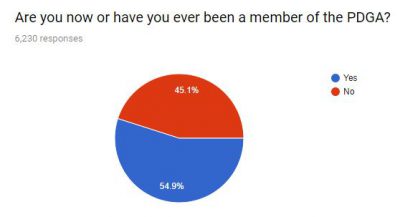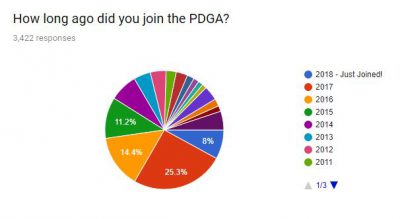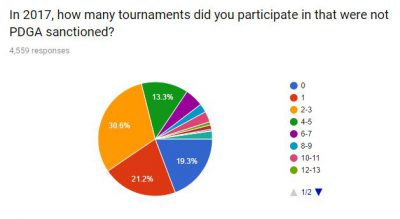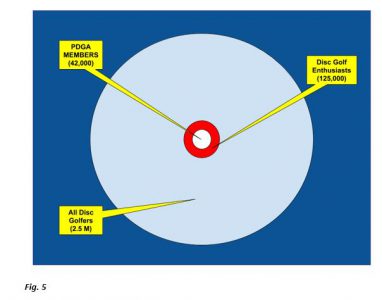Disc Golf Growth – How do we “Grow the Sport”

Disc golfers have been purposeful and proactive about growing their sport since Steady Ed Headrick installed the first permanent ‘Pole Hole’ course in Pasadena, California more than 40 years ago.
Most of us are familiar with the hashtag #GrowTheSport (and the more recent #GrowDiscGolf). The shared belief behind the rallying cry began with the first disc golf pioneers and became an integral part of the sport’s very personality as it spread to the next generation of new players, and then the next. The conviction that we have a duty to share the sport is encoded in the DNA of every diehard player and has been for decades, long before the advent of social media.
The 2018 State of Disc Golf survey asked several questions that sought to measure and identify the details of this most singular aspect of the sport— a topic which is finally attracting some well-deserved attention. Disc golf’s unstoppable and organic grassroots growth machine is empirically obvious, observable in thousands of communities around the world. In my new book, The Disc Golf Revolution, I dedicate an entire chapter to it and provide numerous examples from around the world. Answers to one question posed in the survey add a degree of quantification to one of the book’s main assertions: disc golfers do more than talk the talk.
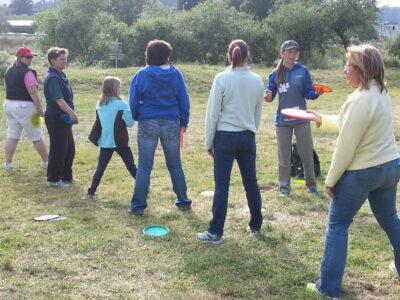
When asked “In 2017, which did you do to grow the sport,” 88 percent of the 5,952 who responded said they had introduced at least one new person to the game, and 83 percent said they had given discs or other equipment to a prospective or new disc golfer. More than 20 percent said they had participated in local government affairs in support of disc golf. That is 1,260 people from this small sampling alone who are attending city council meetings and calling their representatives at minimum, with many also dedicating countless hours to work hands-on in partnership with civic leaders. Aside from its broad appeal and accessibility, this is the main reason disc golf enjoys such robust growth and can look forward to more of the same. Other impressive results included:
- Helped physically install a new course (16 percent)
- Ran a tournament or similar event (15.9 percent)
- Ran a disc golf league (14.4 percent)
- Ran an event or clinic aimed at attracting new players (11.6 percent)
- Designed a disc golf course (9.8 percent)
If we were forced to identify from these responses something the disc golf community might do better in the future, I would point to the fact that the responses are lower for running an event to bring in new players than for running disc golf leagues and tournaments. The latter are aimed mostly at players who are already enamored with the sport, whereas the former seeks to bring new people into the fold.
Tipping Point?
Other survey questions sought to determine the rate of growth in disc golf, and whether it is accelerating in recent years (Spoiler Alert: the answer is ‘Yes’). The answers corroborate player and course growth data that is already available from the Professional Disc Golf Association and DGCourseReview.com, and I believe they also indicate an important shift in the public perception of disc golf. Whereas growth in the past was almost entirely due to the unceasing efforts of those early disc golf pioneers — steady progress despite stiff headwinds — today the efforts of an even greater number of disc golf diehards are bolstered rather than buffeted by external forces. They are more often welcomed now, if not summoned, by local governments and school officials.
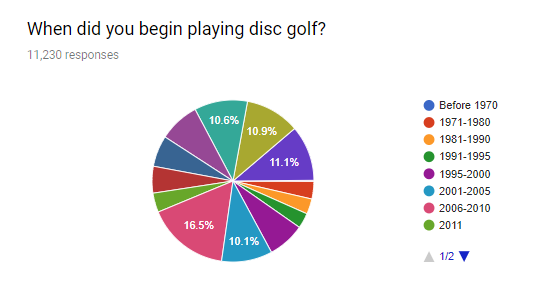 Infinite received more than 11,000 replies to the survey question ‘When did you begin playing golf?’ Nearly 75 percent named a year between 2006 and 2018, and less than 20 percent selected 2000 or earlier.
Infinite received more than 11,000 replies to the survey question ‘When did you begin playing golf?’ Nearly 75 percent named a year between 2006 and 2018, and less than 20 percent selected 2000 or earlier.
A closer examination of the more recent years helps us to nail down when the shift I mentioned began. 2006-2010 accounts for 16.5 percent, while nearly half of all respondents indicated a year between 2013 and 2017.
Another question asked disc golfers how many permanent courses within a 10-mile radius of their homes had been added and deleted in 2017, and the responses unsurprisingly reflected growth across the board. 20 percent of the 6,230 survey takers reported one new course, and 5 percent reported 2 or more. Less than one in 10 reported a course closure near them in 2017, a figure that looks strong compared to the ‘courses added’ responses. But that number will likely fall even lower as the sport’s popularity continues to rise and less courses are installed on a provisional basis.
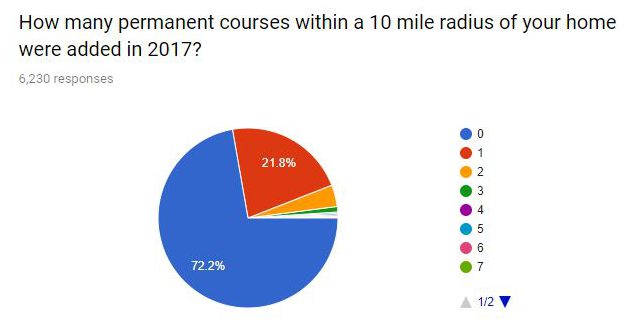
All the available data from Infinite and elsewhere confirm that disc golf has entered a new phase of growth. The world is noticeably more receptive to and knowledgeable about the game, and the pace of its expansion is ratcheting higher and higher. The foundation of organic, grassroots support? It’s alive and well, bigger and stronger than ever.

